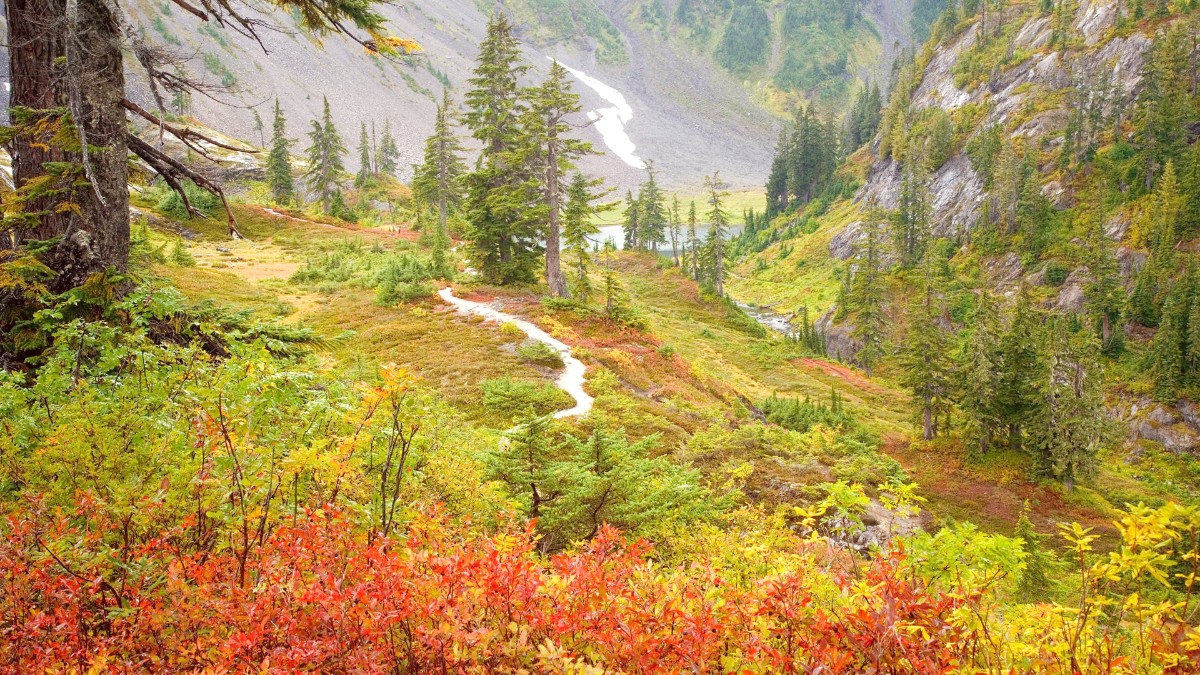
Russian Far East, Russia
The peninsula has a subarctic climate, but significant regional variations exist. Coastal areas, especially around Petropavlovsk-Kamchatsky, experience milder winters and cooler summers due to the moderating influence of the Pacific Ocean. Inland areas, however, have more extreme continental temperatures.
Climate Patterns Throughout the Year:
Winter (November - April): Long, cold, snowy conditions. Average January temperatures in Petropavlovsk-Kamchatsky range from -7°C (19°F) to -10°C (14°F), dropping lower inland. Heavy snowfall is common. Daylight hours are short.
Spring (May - June): Transition period. Snowmelt begins, leading to muddy trails. Temperatures slowly rise from around 0°C (32°F) in May to 10°C (50°F) in June. Higher elevations retain snow.
Summer (July - August): Mildest months and most popular for tourism. Average temperatures range from 13°C (55°F) to 16°C (61°F), with occasional warmer days. Rain is frequent, and dense fog can be common. Longest daylight hours.
Autumn (September - October): Cooler, wetter weather as October progresses. Temperatures drop from 10°C (50°F) in September to near 0°C (32°F) by late October. Salmon spawning draws bears to rivers.
Weather conditions change rapidly, especially for helicopter tours or mountain expeditions. Factor in buffer days for potential delays.
Volcanic eruptions are possible and can disrupt air travel or cause temporary area closures. Local authorities and tour operators monitor activity closely and adjust itineraries. Coastal areas frequently experience dense fog, delaying or canceling flights. Summer months often bring rain, so waterproof rain gear is helpful. Winds are strong in exposed areas and at higher elevations; layered clothing manage wind chill.
Peak travel period
Warmest weather, snow-free trails, peak for hiking, climbing, wildlife viewing, and helicopter tours. Most tourist infrastructure operates.
Highest prices, more crowds. Expect persistent fog and rain, impacting visibility.
Transition periods
Fewer tourists, slightly lower prices. June wildflower viewing, September autumn colors and salmon spawning.
Less predictable weather, colder temperatures, higher chances of rain/snow. Some trails may still have snow in June. Shorter daylight hours in autumn.
Winter activities
Best for winter sports (heli-skiing, snowmobiling). Stunning winter landscapes. Lowest prices. Northern Lights possible.
Extreme cold, heavy snowfall. Many areas inaccessible. Limited tourism infrastructure. Significantly shorter daylight hours.
For hiking and trekking, mid-July to late August conditions. Bear viewing during salmon runs between July and September, with August often the peak. Volcano climbing is best in August for stable and warm weather.
Helicopter tours to places like Valley of Geysers or Kurile Lake are most likely to fly from July to September, but remain weather-dependent. Skiing and snowboarding suitable from January to April. Snowmobiling and dog sledding from December to April. Salmon fishing from July to September.
Weather conditions change rapidly; build buffer days into your itinerary.
Especially for helicopter tours or mountain expeditions, delays are possible.
Monitor local warnings, as ash clouds can disrupt air travel or close areas.
Frequent, especially along the coast. Prepare with waterproof gear.
Strong winds occur at higher elevations. Layered clothing help.
Travelers to Kamchatka, like other parts of Russia, meet specific visa and entry requirements. These regulations can vary by nationality, so checking the latest information from the Russian Embassy or Consulate in your home country well in advance of travel is important.
For leisure travel, a tourist visa is typically sought. It generally an invitation (a "visa support letter" or "tourist voucher") from a Russian tour operator or a registered hotel.
Since August 2023, Russia offers an unified electronic visa (e-Visa) for citizens of 52 countries. It single entry for up to 16 days for tourism, business, or private visits.
Kamchatka is a generally expensive travel destination due to its remoteness, complex logistics, and specialized transport. Careful budgeting manages expenses.
Prioritizing health and safety is important for any Kamchatka trip. The remote nature of many attractions and the presence of significant wildlife require careful planning and adherence to safety guidelines.
Kamchatka has a large brown bear population. While bear attacks are rare, extreme caution is needed when hiking or camping. Always travel with experienced guides who understand bear behavior and safety protocols. Make noise on trails.
Mosquitoes and midges are abundant in summer, especially near water bodies. Carry strong insect repellent. Volcanic eruptions are possible; always follow local warnings and guidance from tour operators.
Tick-borne Encephalitis (TBE) is a risk in forested areas; vaccination is highly advisable. Altitude sickness a concern for volcano ascents; acclimatize slowly. Sun exposure strong; use sunscreen and protective eyewear. Hypothermia and frostbite risks exist in cold weather.
Get TBE vaccination and use DEET repellent.
Avoid unpasteurized dairy and raw meat from informal vendors.
Petropavlovsk-Kamchatsky has hospitals and clinics, though medical care quality may not meet Western standards. English-speaking staff are rare. Remote areas have very limited or no medical facilities, making emergency evacuation challenging and expensive.
Carry all personal prescription medications with a doctor's letter.
Do not rely on finding specialized medical care in remote areas.
Kamchatka is in an active seismic zone, so earthquakes are possible. Coastal areas are at tsunami risk. Landslides and rockfalls occur in mountainous terrain after rain or snowmelt. Be prepared for blizzards in winter and sudden, severe weather changes.
Familiarize yourself with earthquake safety procedures.
Do not venture off marked trails in mountainous areas without a guide.
| Service | Number | Notes |
|---|---|---|
| Universal Emergency | 112 | Connects to police, fire, ambulance. |
| Police | 102 | Direct police contact. |
| Ambulance | 103 | Medical emergency services. |